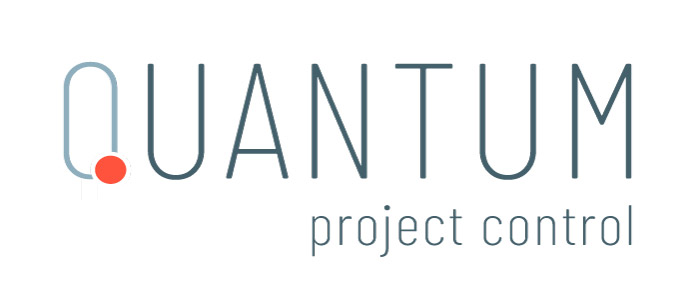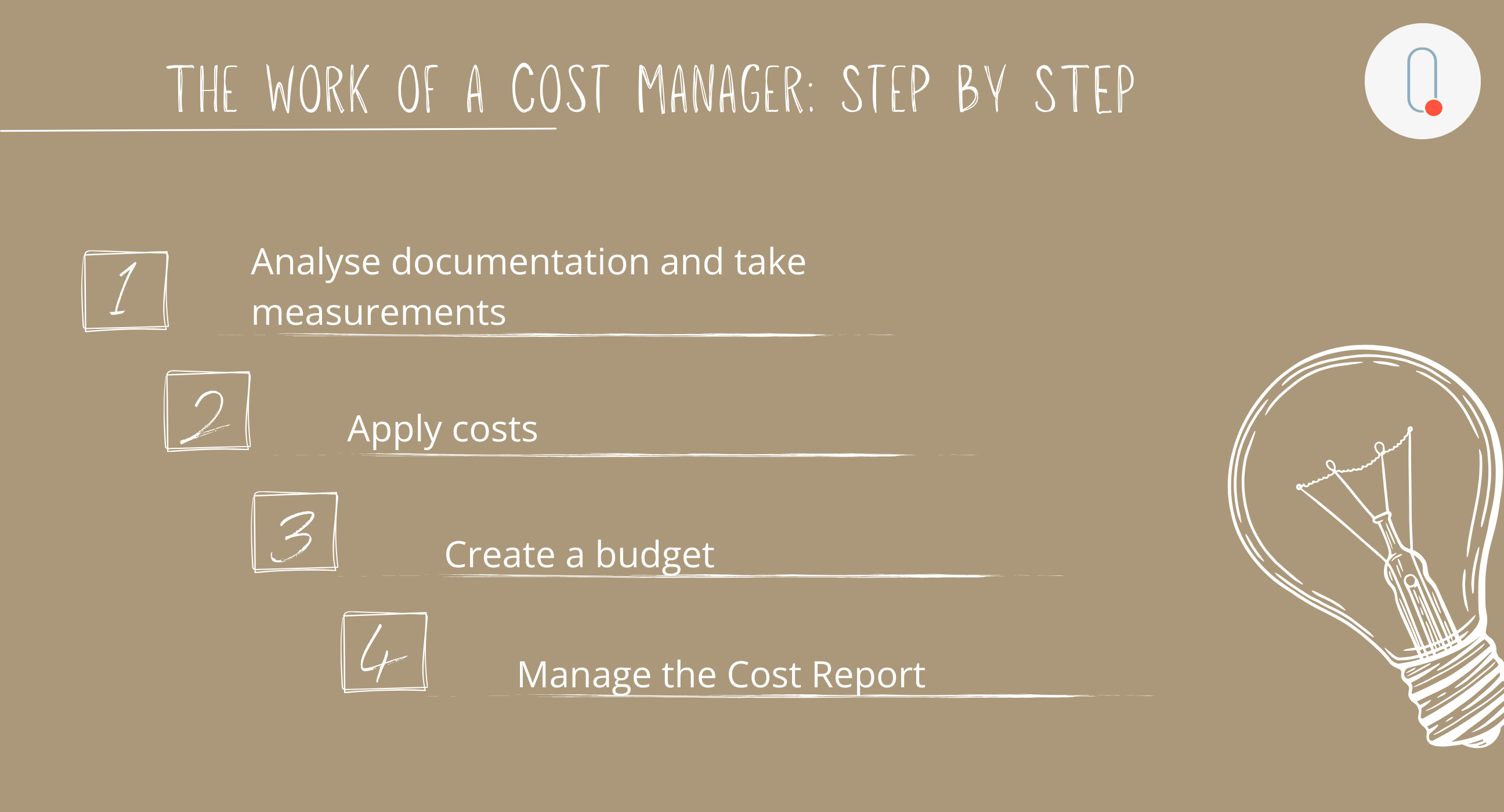The role of a Construction Cost Manager (or Quantity Surveyor) is getting traction across Scandinavia as more and more investors start fully comprehending the benefits of having someone working on the budgetary health of the project. A Cost Manager’s work provides financial clarity and enables informed decision-making processes. Learn more about Cost Management and discover the benefits and the risks of not having a skilled CM in your team.
Cost Manager? Quantity Surveyor? Commercial Manager? Which one is it?!
Luckily for us all, the terms Cost Manager, Quantity Surveyor and Commercial Manager are interchangeable. In the construction sector, they are simply considered different names for very similar roles. This could in some occasions cause some confusion, but in the end it’s very straightforward.
A Cost Manager (Quantity Surveyor) is a person, who’s tasked with measuring the quantities of operations, materials, labour and equipment, and who then accurately estimates all the costs and sets realistic budgets. All these tasks and processes make it possible to allocate resources efficiently, navigate financial risks and control expenditures throughout the project.
Quantification and costing are especially important during tendering and contract negotiations, as they provide a clear understanding of project costs from the outset. With these practices, maintaining financial control and contributing to the successful and profitable completion of construction projects becomes a much easier task.
The benefits of having a Cost Manager on a construction project
Having a skilled Cost Manager is synonymous to having a well-executed cost planning process, which is very valuable. It ensures that project costs get forecasted accurately allowing to set realistic budgets. By measuring the exact quantities of materials, labour, and equipment needed (and combining those numbers with knowledge of construction rates and benchmarks), a Cost Manager can get a clear picture of how much everything will cost. This foresight helps avoid unexpected expenses which could derail the project’s financial viability.
Proper quantification also plays a significant role in resource planning. Knowing project’s exact needs makes it easy to pinpoint potential risks as well as resources that need to be accounted for. This proactive approach further minimizes the risks and helps avoiding delays connected to those risks. It also improves time management, financial viability and makes project planning that much easier.
But the list of benefits doesn’t end here. As mentioned, accurate costing is invaluable during contract negotiations. For example, reliable cost data offers a solid foundation for discussing terms with contractors and clients. This transparency fosters trust and ensures that everyone is on the same page regarding pricing, time and project-specific risks. It also makes it easier to handle any changes or variations that may arise during the project.
Ultimately, strong quantification and costing practices help manage risks effectively. By understanding costs and resources upfront, a Cost Manager can identify potential issues early and make informed decisions. This way, both keeping the project within budget and ensuring its successful completion becomes much easier. In the construction industry, a well-organized approach to quantification and costing is key to delivering quality work on time and on budget.
The work of a Cost Manager
Cost Manager’s job entails a series of tasks, which overall contribute to project’s health and oftentimes validate its completion. Here’s all the stages of Cost Manager’s work throughout the lifetime of a project.
STEP 1: Analyse documentation and take measurements
The common first step is looking closely at detailed project drawings and specifications, which provide the foundation for quantification. Analysing these documents allows to identify all the materials, labour, and equipment needed for each phase of the project. And there are several ways to go about it.
For instance, on one large-scale commercial development, it may be possible to extract careful measurements from a BIM model using specialized software to streamline the process. A more common practice would be to take measurements “manually” in software programmes such as Blue Beam.
An experienced Cost Manager is usually able to decide what is the best approach, since there are benefits and drawbacks of each solution. For example, there are added risks with using BIM models and automated quantity take offs as the measurements are only as good as the BIM model that is being used. A good BIM execution plan can mitigate this, but this requires that the Cost Manager is involved in the project from early stages as the model must be set up for costing and quantification purposes at the outset of the project.
STEP 2: Apply cost data
Once the quantities are collected, the next step is usually applying cost data. Cost Manager gathers pricing details from reliable sources, combining the most up to date market information available, such as recent tenders, suppliers and data from other relevant projects. For example, during the commercial renovation of a set of listed buildings in a center of a big European capital, it proved useful to compile cost data to create a detailed cost estimate for each building. This provided a clear understanding of how and why each building differed in cost from others due to the unique challenges each building presented.
STEP 3: Create a budget
After developing a comprehensive cost estimate, the Cost Manager recommends a budget that outlines the financial resources required for the entire project, including contingencies for unexpected expenses, contractors’ overheads and profits etc. This budget acts as a roadmap, guiding the Client through the project and helping to manage spending.
STEP 4: Manage the Cost Report
Throughout the project, the Cost Manager handles and updates the cost report to monitor actual expenditures against the budget on a regular basis. This ongoing comparison allows to identify discrepancies early on and adjust the project as needed. If there are necessary changes in scope, their impact on cost can quickly be quantified and the scope of adjustments can be negotiated with the client and the contractor.
In practice, strong quantification and costing practices not only keep projects on track financially but also enhance communication with stakeholders and contractors. Providing transparent cost information fosters trust and collaboration among everyone involved, ultimately increasing chances of successful project outcomes.
Why should you care – what could happen if you don’t have a skilled Cost Manager in your team?
Engaging in quantification and costing work is highly recommended in construction for multiple reasons. Having accurate measurements and cost estimates creates a solid financial framework for any project. Taking the time to quantify materials, labour, and equipment accurately, makes it possible to develop a realistic budget that reflects the true scope of the work. This foresight helps prevent costly surprises down the road, allowing for overall smoother project execution.
Project not adjusted to the local market
Accurate cost estimation plays a crucial role in material selection for construction projects and can reveal inefficiencies. We worked with a client who attempted to replicate a building design from the U.S. market in Europe. The challenge was that the design relied on steel construction, which is uncommon and significantly more expensive in the destination market, with few skilled contractors available. As Cost Management experts, we provided the client with steel cost estimates as requested but also recommended adjusting the design to use concrete instead. This change led to substantial savings without compromising quality.
Budget overruns
Poor costing practices can lead to budget overruns. If not all potential expenses (such as access rights and overheads) are properly accounted for, the project might end up in a situation where the actual costs far exceed the original estimates. This can jeopardize the project’s financial viability but it might also have other repercussions, such as affecting relationships between clients, subcontractors and everyone else involved in the project.
Change management issues
Without clear costing and contract understanding, managing changes becomes difficult. Construction projects often evolve and having clear cost agreements helps navigate these changes smoothly. Not being able to contractually price the impact of a scope change makes it challenging to negotiate adjustments to the contract, leading to disputes and delays.
Ultimately, engaging in thorough quantification and costing practices not only mitigates risks but also enhances the overall success of a project. By investing time and effort into these processes, a skilled CM can ensure that projects stay on track financially and are delivered to the finish line safe and sound.
Commercial Managers offer project predictability
Effective quantification and costing practices are the heart and soul of what a Cost (Commercial) Managers role is. It is essential for successful project delivery and play a crucial role in safeguarding reputations in the construction industry. By minimizing risks and enhancing financial control, these practices enable clients to navigate projects confidently, offering reassurance and peace of mind throughout the entire process.



